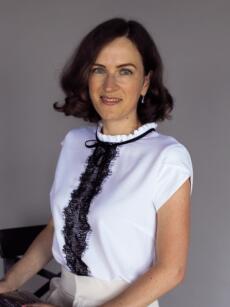
Dissertation project:
Linguistic representation of Russian characters in American cinema

Dissertation project:
Linguistic representation of Russian characters in American cinema
(Academic) Work Experience
| 04/2022 - present |
Research assistant, English Department, University of Münster |
| 01/2019 - 02/2021 | Teacher of English and Spanish, self-employed |
| 02/2018 - 04/2018 | Internship in British Council, Moscow, Russia |
| 09/2017 - 09/2018 | Translator, World Wildlife Fund Russia |
Academic Background
| 04/2021 | Admission to the Graduate School Empirical and Applied Linguistics, University of Münster |
| 07/2020 - 10/2020 | Certificate in teaching Russian as a foreign language, Moscow State University, Russia |
| 09/2019 - 09/2020 | MA in Sociolinguistics, the University of York, UK |
| 09/2015 - 01/2019 | BA in Linguistics, Moscow State Linguistic University, Russia |
Linguistic representation of Russian characters in American cinema
Language of film characters’ is an essential part of their image. The ability of linguistic varieties (such as dialects, accents, registers and styles) to convey information about speakers’ social backgrounds is often used by filmmakers as a shortcut for building characters’ profiles (Lippi-Green, 1997; Queen, 2015). In particular, linguistic choices in films have been found to correlate with such non-linguistic variables as characters’ narrative evaluation (e.g., positive or negative), role centrality (e.g., main, supporting or minor roles) and social characteristics (e.g., ethnicity, gender or social class). The connection between linguistic form and social meaning, referred to as sociolinguistic indexicality, also affects the choice of individual linguistic features employed in characters’ speech. For instance, stylized speech in films often relies on a limited number of salient and stereotypical features, which are highly indexical of a linguistic variety and easily recognizable by a lay audience (see, e.g., Bucholtz & Lopez, 2011). Ultimately, linguistic choices made for particular characters can reflect attitudes held toward respective social groups as well as ideologies that filmmakers want to convey or challenge.
The project aims at investigating how linguistic choices help form the image of one particular social group in American cinema, the Russians. Russian characters have been inhabiting the Hollywood space since its establishment, with more than 240 films featuring Russians produced between 1946 and 1991 (Fedorov, 2017). As Strada and Troper (1997) argue, the representation of Russians in Hollywood has largely followed and reflected socio-political relations between the U.S. and the USSR/Russia. Although these relations have seen dramatic turns, including the countries’ allied participation in WWII and the following Cold War confrontation, it is mainly unfavourable Russian characters that have become archetypal in Hollywood (Goering & Krause, 2006). The role of language in the cinematic representation of Russians, however, remains under-studied. Using a character-based approach to language variation in films (Androutsopolous, 2012), the study is analyzing linguistic (phonetic, grammatical and lexical) and non-linguistic (narratological and social) variables of Russian characters in order to identify meaningful correlations. Indexicalities of stylized Russian English and its features will be determined as a result. The research will further assess if the use of indexical features in this variety of English, belonging to the Expanding Circle, conforms to the patterns discovered for other, Inner and Outer Circle varieties of English (Kachru, 1985). Lastly, the concluded patterns of characterization and language variation will contribute to better understanding the role of cinema in conveying ideologies and projecting attitudes towards Russians in the U.S.